365nm UV LED Power Dissipation 9w Radiant Flux 3000mw is suitable for UV curing, UV ink curing, Photo-Catalyst, Sensor Light, etc.
model no. :
9W UV LED ChipsBrand:
DSXUVport of dispatch :
SHENZHENPayment :
T/Toriginal region :
CHINALighting Color(Peak Wavelength) : 365nm
Surface Mount Type : 6.0×6.0×1.2 (L×W×H, Unit : mm)
Viewing Angle(Directivity) : Typical 120°
Soldering Methods : Pb-Free IR-Reflow Soldering
Outline Dimensions
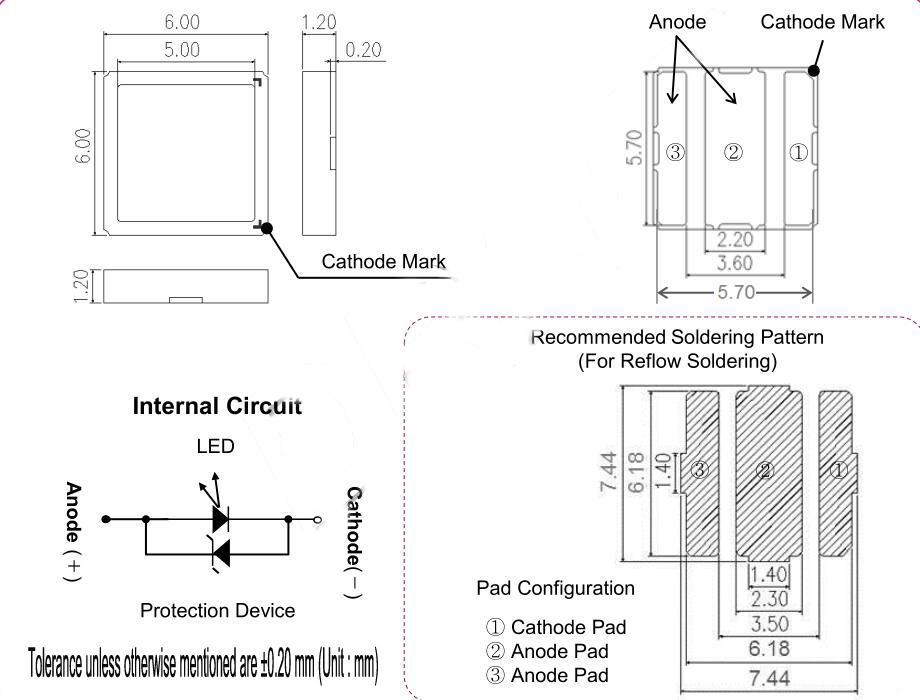
Applications
- UV Curing, UV Ink Curing, Photo-Catalyst, Sensor Light, etc.
Absolute Maximum Ratings (Ta= 25℃)

※ Operating the LED beyond the listed maximum ratings may affect device reliability and cause permanent damage.
These or any other conditions beyond those indicated under recommended operating conditions are not implied.
The exposure to the absolute maximum rated conditions may affect device reliability.
※ The LEDs are not designed to be driven in reverse bias.
Electro-Optical Characteristics (Ta= 25℃)

*1) Rthj-c = Thermal Resistance (Junction – Case)
※ These values are measured by the LG Innotek optical spectrum analyzer within the following tolerances.
- Forward Voltage(Vf) : ±0.1V
- Peak Wavelength(λp) : ±3.0nm
- Radiant Flux(Φe) : ±10%
※ Although all LEDs are tested by LG Innotek equipment, some values may vary slightly depending on the
conditions of the test equipment.
Bin Structures
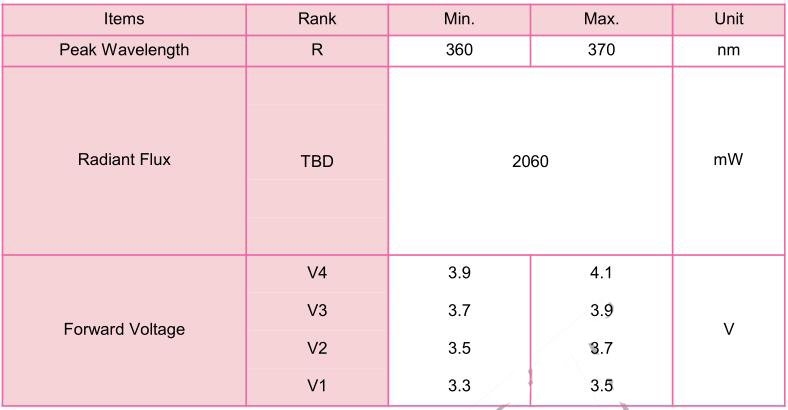
※ Forward Current = 1.5A
※ Rank name method : Please refer to the following example
Rank Name : R-GP09-V2
- Peak Wavelength = R
- Radiant Flux = GP09
- Forward Voltage = V2
Cautions on Use
1. Moisture-Proof Package
-. The moisture in the SMD package may vaporize and expand during soldering.
-. The moisture can damage the optical characteristics of the LEDs due to the encapsulation.
2. During Storage

3. During Usage
-. The LED should avoid direct contact with hazardous materials such as sulfur, chlorine, phthalate, etc.
-. The metal parts on the LED can rust when exposed to corrosive gases. Therefore, exposure to corrosive gases must be avoided during operation and storage.
-. The silver-plated metal parts also can be affected not only by the corrosive gases emitted inside of the end-products but by the gases penetrated from outside environment.
-. Extreme environments such as sudden ambient temperature changes or high humidity that can cause condensation must be avoided.
4. Cleaning
-. Do not use brushes for cleaning or organic solvents (i.e. Acetone, TCE, etc..) for washing as they may damage the resin of the LEDs.
-. Isopropyl Alcohol(IPA) is the recommended solvent for cleaning the LEDs under the following conditions.
Cleaning Condition : IPA, 25℃ max. × 60sec max.
-. Ultrasonic cleaning is not recommended.
-. Pretests should be conducted with the actual cleaning process to validate that the process will not damage the LEDs.
5. Thermal Management
-. The thermal design of the end product must be seriously considered, particularly at the beginning of the system design process.
-. The generation of heat is greatly impacted by the input power, the thermal resistance of the circuit boards and the density of the LED array combined with other components.
6. Static Electricity
-. Wristbands and anti-electrostatic gloves are strongly recommended and all devices, equipment and machinery must be properly grounded when handling the LEDs, which are sensitive against static electricity and surge.
-. Precautions are to be taken against surge voltage to the equipment that mounts the LEDs.
-. Unusual characteristics such as significant increase of current leakage, decrease of turn-on voltage, or non-operation at a low current can occur when the LED is damaged.
7. Electrostatic Discharge (ESD)
- The LEDs are sensitive to static electricity or surge voltage and current.
The Electrostatic Discharge can damage a LED Chip.
Also, It can be affect a reliability belong to the life time of LED package.
When handling LEDs, the following measures against ESD are actively recommended :
1) Please wear a wrist strap, anti-static clothes, foot wear and gloves.
2) Please set up a grounded or anti-static paint floors, a grounded or the ability to surge protection
-workstation equipment and tools.
3) ESD protection- worktable/bench, mat made of a conductive materials.
- An appropriate grounding is required for all devices, equipment, and machinery used in product assembly.
Please apply surge protection after review when designing of commercial products(Curing Module, etc).
- If tools or equipment contain insulating materials such as glass or plastics, the following measures against ESD are strongly recommended :
1) Dissipating static charge with conductive materials
2) Preventing charge generation with moisture
3) Plug in the ionizing blowers(ionizer) for neutralizing the charge
- The customer is advised to check if the LEDs are damaged by ESD when performing the characteristics inspection of the LEDs in the application.
Damage of LED can be detected with a forward voltage checking(measuring) at low current(≤1mA).
- ESD damaged LEDs may have a current flow at a low voltage.
* Failure Criteria : V F < 2.0V at If= 0.5mA.
8. Recommended Circuit
-. The current through each LED must not exceed the absolute maximum rating when designing the circuits.
-. In general, there can be various forward voltages for LEDs. Different forward voltages in parallel via a single resistor can result in different forward currents to each LED, which also can output different
luminous flux values. In the worst case, the currents can exceed the absolute maximum ratings which can stress the LEDs. Matrix circuit with a single resistor for each LED is recommended to avoid the luminous flux fluctuations.

Fig.1. Recommended Circuit in Parallel Mode :
Separate resistors must be used for each LED.
Fig.2. Abnormal Circuit :
Avoid this circuits! The current through the LEDs may vary due to the variation in LED forward voltage.
-. The driving circuits must be designed to operate the LEDs by forward bias only.
-. Reverse voltages can damage the zener diode, which can cause the LED to fail.
-. A constant current LED driver is recommended to power the LEDs.
9. Soldering Conditions
-. Reflow soldering is the recommended method for assembling LEDs on a circuit board.
-. LG Innotek does not guarantee the performance of the LEDs assembled by the dip soldering method.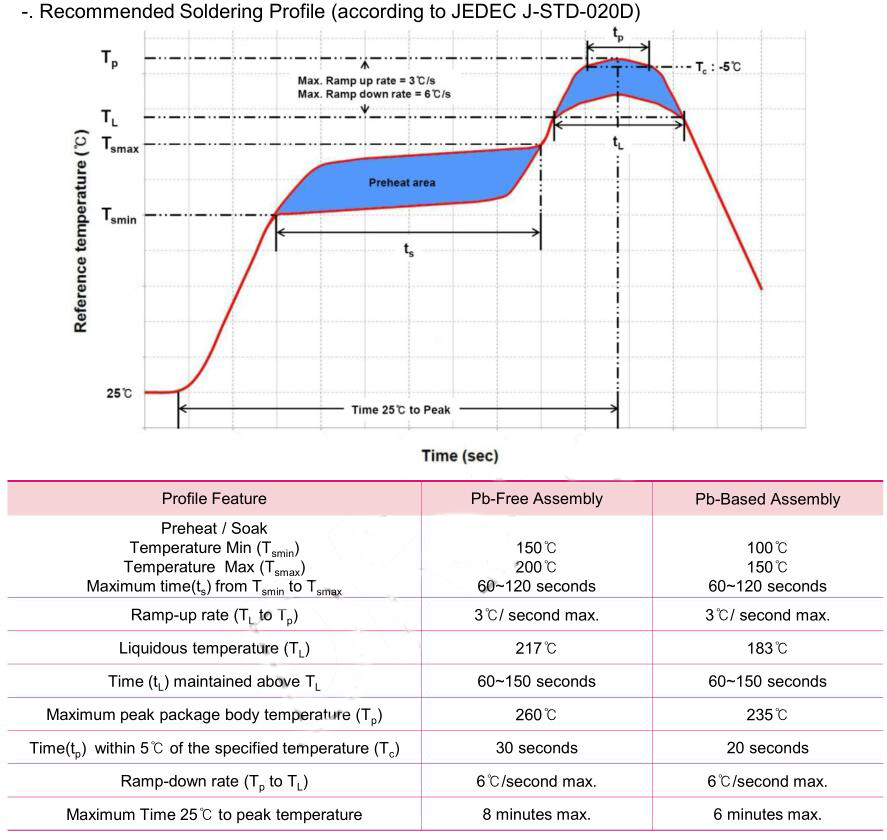
-. Reflow or hand soldering at the lowest possible temperature is desirable for the LEDs although the recommended soldering conditions are specified in the above diagrams.
-. A rapid cooling process is not recommended for the LEDs from the peak temperature.
-. The silicone encapsulant at the top of the LED package is a soft surface, which can easily be damaged by pressure. Precautions should be taken to avoid strong pressure on the silicone resin when leveraging the pick and place machines.
-. Reflow soldering should not be done more than two times.
10. Soldering Iron
-. The recommended condition is less than 5 seconds at 260℃.
-. The time must be shorter for higher temperatures. (+10℃ → -1sec).
-. The power dissipation of the soldering iron should be lower than 15W and the surface temperature of the device should be controlled at or under 230℃.
11. Eye Safety Guidelines
-. Do not directly look at the light when the LEDs are on.
-. Proceed with caution to avoid the risk of damage to the eyes when examining the LEDs with optical instruments.
12. Manual Handling
-. Use Teflon-type tweezers to grab the base of the LED and do not apply mechanical pressure on the surface of the encapsulant.
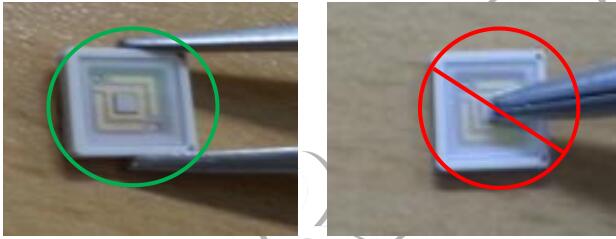
Disclaimers
-. Guangdong SpaceLight Technology Co., Ltd. is not responsible for any damages or accidents caused if the operating or storage conditions exceed the absolute maximum ratings recommended in this document.
-. The LEDs described in this document are intended to be operated by ordinary electronic equipment.
-. It is recommended to consult with Guangdong SpaceLight Technology Co., Ltd. when the environment or the LED operation is non- standard in order to avoid any possible malfunctions or damage to product or risk of life or health.
-. Disassembly of the LED products for the purpose of reverse engineering is prohibited without prior written consent from Guangdong SpaceLight Technology Co., Ltd.. All defected LEDs must be reported to Guangdong SpaceLight Technology Co., Ltd.and are not to be disassembled or analyzed.
-. The product information can be modified and upgraded without prior notice.
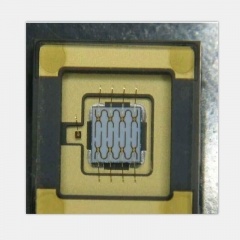 High Power UV-LED NVSU333A U365nm 18.9W 3640mW/cm2
High Power UV-LED NVSU333A U365nm 18.9W 3640mW/cm2
NVSU333A UV-LED is widely used in high precision curing, ink curing (printing), bill checker etc. It's also the best way to solidify UV glue.
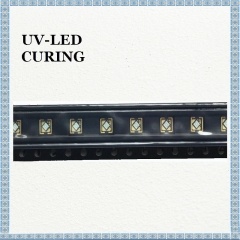 NICHIA UV LED NVSU233B U365nm
NICHIA UV LED NVSU233B U365nm
NICHIA UV LED NVSU233B U365nm is most applied in UV curing, splicing, UV glue, and UV prinying ink curing.
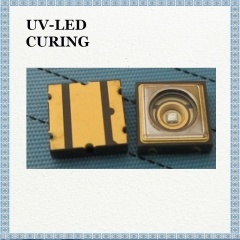 NICHIA NCSU033B 365nm UV LED
NICHIA NCSU033B 365nm UV LED
NICHIA NCSU033B 365nm UV LED can be used for criminal investigation, such as the observation of fingerprint, bloodstain, etc., mineral fluorescence observation, oil cleaning observation, and so on.
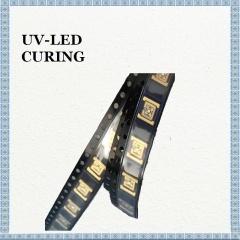 NICHIA UV LED NCSU033C U365nm
NICHIA UV LED NCSU033C U365nm
NICHIA UV LED NCSU033C U365nm is Pb-free reflow Soldering application, built-in EDS protection Device, RoHS compliant.
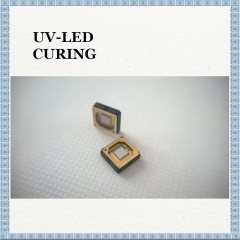 SVC CUN6GF1A UV 365nm 5W High Radiant Flux 1300mW
SVC CUN6GF1A UV 365nm 5W High Radiant Flux 1300mW
The applications of SVC CUN6GF1A UV 365nm 5W High Radiant Flux 1300mW are UV curing, printing, coating, adhesive, counterfeit dection/security, UV torch, fluorescence, photegraphy, dental curing, crime inspection, oil leak detection.
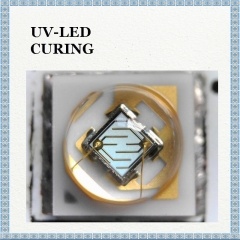 High Power NICHIA UV LED NCSU276A U365nm for UV Curing
High Power NICHIA UV LED NCSU276A U365nm for UV Curing
NICHIA UV LED NCSU276A U365nm requires unique and delicate production process. NICHIA places strict controls from wafer manufacturing to final inspection.